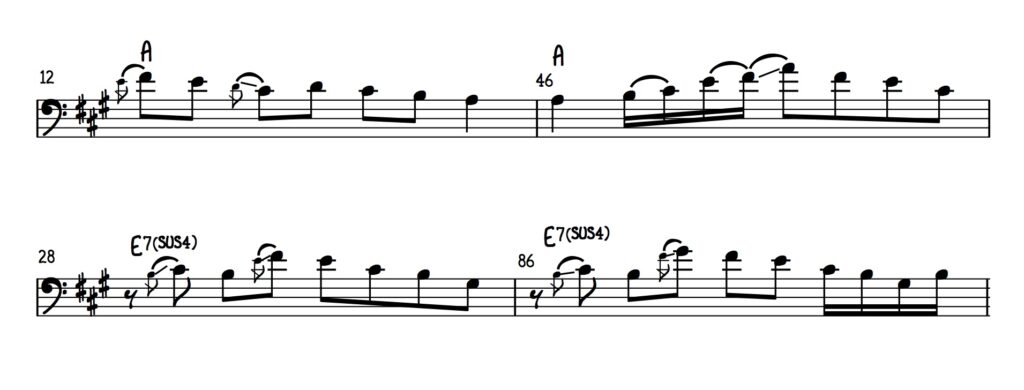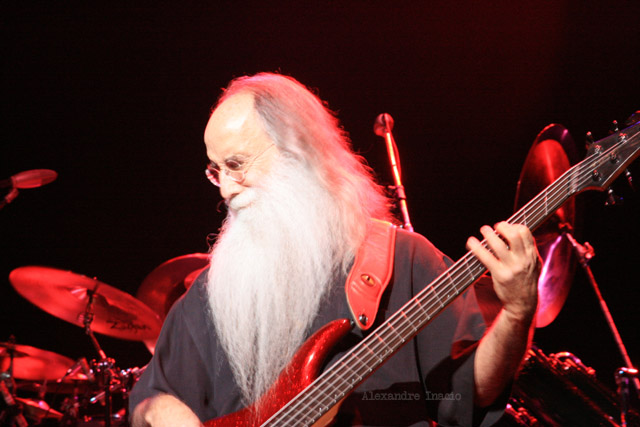Leland Sklar is, without doubt, one of the most recorded bass players in history; his playing has graced more than 2,000 albums since his career began in the 1970s. As such, it’s hard to provide a brief cross-section of his diverse credits, but you’ve heard his bass on recordings with Phil Collins, Toto, James Taylor, Billy Cobham, Carole King, and The Bee Gees.
Now into his seventh decade, Sklar shows no signs of slowing down. His recent foray into the world of YouTube has been hugely successful, allowing fans the chance to hear him play through some of his most famous bass parts and discuss the recording and composition processes.
Having started out studying classical piano from the age of five, Leland continued lessons until junior high where he began playing upright bass, again with a focus on classical music. The switch to contemporary genres came in his teens when his father bought him his first electric bass; hearing The Beatles for the first time proved to be a formative musical experience. Sklar cites bass players like Paul McCartney and Jack Bruce as prominent influences due to their ability to write bass parts that balance supportive playing with melodic content.
Landing the gig with James Taylor turned out to be the starting point of a legendary session career; the decision to credit Taylor’s backing musicians in the liner notes of his One Man Dog album (1972) led to numerous recording offers from other artists, with Sklar quickly finding himself working on roughly three sessions a day, five days a week.
Sklar sums up this barrage of early session work as ‘learn while you earn’, a period in which he developed his understanding of gear, the recording process and – most importantly of all – how to craft basslines. Speaking of which, let’s delve into his superb bass playing on James Taylor’s ‘You’ve Got a Friend’.
EDIT: Thanks to Randy Hauer and Bob Davis, who both pointed out a lack of accidentals in the bridge section of the original transcription.
James Taylor – ‘You’ve Got a Friend’ bass transcription PDF
‘You’ve Got a Friend’, a version of Carole King’s song that appeared on Taylor’s Mud Slide Slim and the Blue Horizon (1971) ended up being his biggest-selling single in the US. The minimal, folk-influenced arrangement allows Sklar’s supportive, yet melodic playing space to shine through.
‘You’ve Got a Friend’ Performance Notes and Analysis
The bass enters in bar 4 with a slippery, descending phrase that makes frequent use of slides and outlines the F# blues scale. Notice that although the harmony is G#m7 to C#7, the concept behind the line is scale-based rather than chord tone-focused.
During the verse, Leland switches to a sparser, more supportive role centred around roots and 5ths, although he still manages to include the odd melodic flourish. These fills are limited to every 8 bars or so and Sklars holds back until there’s a break in the vocal part before moving up the neck; this ensures that the fills don’t become overbearing or crowd the arrangement.
Zooming out on the score allows us to see that there are numerous similarities in both when Leland plays a fill and what he plays.
Compare the licks at bars 12, 28, 46, and 78:

Placing them side by side shows that the main concept at work is scalar motion in 8th notes embellished with slides to give the fills a more vocal quality. Notice how the rhythmic activity also develops as the song progresses.
One other element that becomes obvious when taking in the chart as a whole is the use of space towards the end of each chorus section (bars 32, 66, and 90), where the bass drops out for a bar – it’s unclear as to whether this happened at the time of recording or was a production decision to make space for the busy guitar part at this point.
The middle 8 section (bars 69-78) features several melodic fills in the higher register of the bass. As with the fills in earlier sections, the melodic runs here use descending scale fragments to connect the chords.
For an altogether different take on ‘You’ve Got a Friend’, check out Donny Hathaway’s version which appeared on the infamous (to bass players, at least) Live album and features the sublime Willie Weeks on bass.

